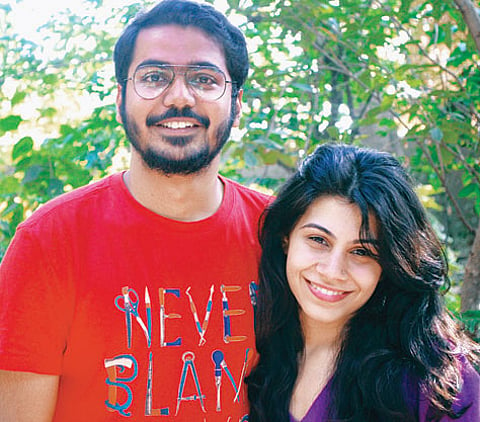

What do you get when visual designers with an interest in urban wildlife decide to drive home a point about caring for animals? You get the Perch Project.
Having grown up in a world where information on urban wildlife isn’t always readily available or easily accessible, two designers from Bangalore's design school 'Sristhi' decided to customise content in the Indian context.
Hazel Karkaria and Somesh Kumar graduated in 2009 and are both graphic designers who are based in Ahmedabad and Bangalore respectively.
Somesh’s interest in urban wildlife had come about after he completed his higher education.
“It was mainly since I was in the company of friends who are interested in bird watching and animal rescue,” he says.
For Hazel, wildlife and animals have always been a part of her life as her parents worked in the field of environment education and they have rescued animals around the house- everything from squirrels to raptors and some reptiles.
“The reason Perch came about was the sheer lack of information on rescuing and rehabilitating mammals or birds in the Indian context.
Google search doesn’t really help because most of the suggestions made are of foods or products that you won’t find here.
Having dealt with animals for a very long time now and having come across this void time and again, there’s a bank of information that has been accumulated from experience," she says, adding, “We’ve wanted to collaborate for a while now and Perch Project is our first selfinitiated project together.
We’re just looking to equip people who want to do their little bit.”
Perch Project aims to cover urban wildlife by periodically taking a member of the urban wildlife and approaching it from the point of view of a rescued animal.
“We look at not only the basics, but also try to cover everything that a person who is new to this would want to know.
We research our posts thoroughly, write our own content and design it too.
We design the content such that it can be easily understood by the audience - we try using visuals wherever we can and include charts and infographics to further simplify the content for the user.
Our emphasis is on quality content, which is informative and can provide aid to the mammal/bird in question,” they chorus.
Right now if you visit their website, you can learn about caring for pregnant dogs and cats in addition to helping birds with a kite-emergency.
“We’re growing slowly and as we do, we may move beyond urban wildlife, though that in itself is pretty vast, post incidents where animals need special care, and also look at events in the Indian scenario where mammals and birds get affected.
We did one such event specific post on Uttarayan (Kite flying festival),” said Somesh.
In the future the duo plans to tie-up with agencies like the Red Cross and Blue Cross, but as of now they want to reach out to a larger audience.
Having started in October 2012, their current emphasis is on generating more content and covering more members of urban wildlife.
“So far, we’ve covered Common Mynas, Domestic Cats and Blue Rock Pigeons.
Once we have enough information to work with, we shall definitely look at other media platforms so that the message has a wider reach,” says Hazel.